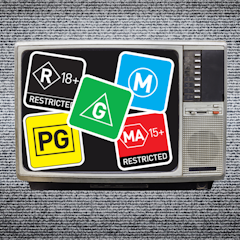
Articles on Children's TV
Displaying 1 - 20 of 29 articles

Many children’s educational shows undergo pre-screening to make sure each episode delivers its intended message. Adult viewers watching alongside kids can help ensure the lessons are well received.

An essential part of managing a growing global waste problem is sorting, recovering and recycling it. But you won’t see this on children’s shows that feature waste collection.

We’re all familiar with a green ‘G’ or a red ‘MA’ on a movie poster, but those ratings don’t have any basis in what we know about child development. They’d be much more useful for parents if they did.

New research finds 83% of surveyed Australian parents say it is important their children see Australian-made programs.

Disability representation in books is an important part of diversity and inclusion.

Australian children’s television is a leader in onscreen queer representations, due in part to its primarily cultural role.

The unending stream of violence on news and entertainment programming can have a negative impact on kids of all ages.

What could the British public lose when the BBC licence is pulled?

A stage musical adaptation is just the newest addition to the cottage industry which is Round The Twist nostalgia.

Michelle Obama’s fun new show is great for teaching children where food comes from but misses an opportunity.

The genius of Bluey isn’t just in its characters and stories of family life. The hit show’s soundtrack sets the mood, plays with the narrative and draws on classical scores.

Bright, kinetic and celebrity-studded, the BBC’s schools output has got the tone right for teaching a generation of screen-addicted youth.

In children’s media, pain is depicted alarmingly frequently, usually unrealistically and often violently, but without empathy or help. These images of pain send all the wrong messages.

The pandemic pause on local children’s television content has become policy. Now what for kids’ TV?

It might seem like nostalgic escapism, but the show has a revisionist impulse at its heart.

The complex user-generated nature of YouTube content for kids is proving difficult to control for the online giant, who have been issued with a US$170 million fine for breaching children’s privacy.

It’s not just a storm in a fruit cup – branding fuels our appetite for unhealthy foods.

The latest fairy tale movie from Disney has a dark twist, so it’s right on trend.

Learning to form friendships is a key part of growing up.

Amid endless reviews into the future of local screen content, uncertainty reigns on issues such as the impact of Netflix, the fate of local content quotas and funding for original children’s TV.
